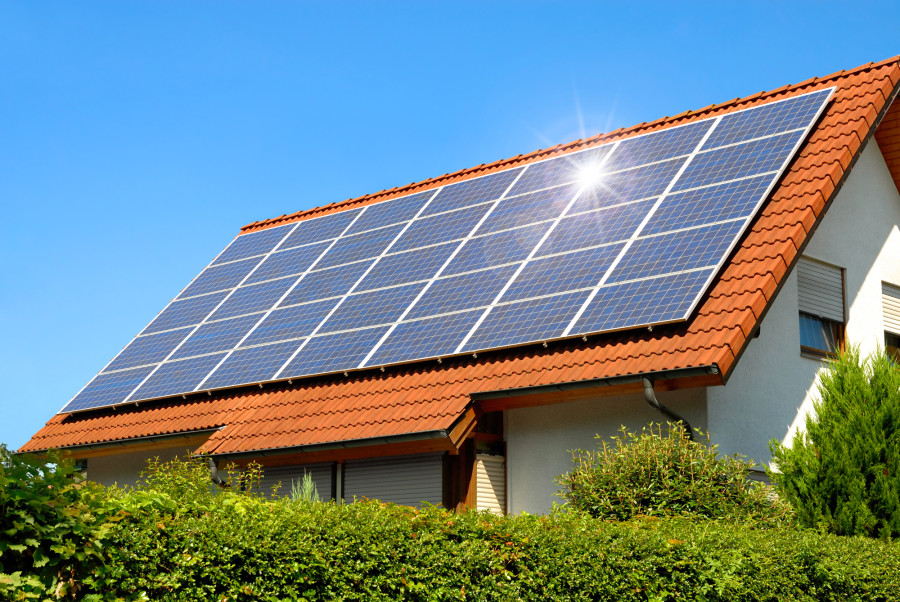Columns
Making renewable energy usage a reality
Providing minimal incentives when importing solar panels undermines the potential of the sector.
Nasala Maharjan
Over the years, sustainable development has become a priority demanding actions on several fronts, including harnessing the potential of technological innovation. Accordingly, with the realisation of climate change, the idea of renewable energy has been gaining much momentum lately.
Renewable energy is an energy source which is virtually inexhaustible in duration but limited in the amount that is available per unit of time. From its concept, it might seem that renewable energy is just a textbook idea and not meant to be actualised in Nepal. However, the possibility of renewable energy, and the capacity to produce and supply renewable energy in the country as well as across borders is not an impossible topic.
Renewable energy accounts for 13.5 percent of the world’s total energy supply and 22 percent of the world’s electricity. In the context of Nepal, although it has huge untapped potential, the lag lies in the actual production, supply and consumption of the energy. The data published in 2014 depicts that the electric power consumption rate in Nepal is only 146 kilowatts per hour per capita, which is far below the global average of 3,132.15 kilowatts per hour per capita. Although the urban population is increasing, consumers still dominantly rely on traditional forms of energy such as fuel, wood and coal. It is argued that conventional energy accounts for 85 percent of the total consumption. In the rural sector, energy and electricity are still a distant dream.
It is also often observed that the lack of electricity in rural areas is actually a result of insufficient transmission lines rather than a meagre supply situation. Therefore, adding transmission lines will not only promote renewable energy but also boost the per capita energy consumption.
While the world is harnessing hydrogen and oxygen as a form of renewable energy, we are still debating the concept of hydropower as a renewable source. The resistance of the Nepali people to move ahead and understand the economics involved in all forms of renewable energy is where we stand apart. Our commitment towards renewable energy may begin from installing a simple solar panel on the roof, but we must continue exploring other options. In fact, to compete with the rest of the world, we must examine other sources of renewables which include wind, solar, hydro and biomass. Additionally, building a reliable distribution and transmission system is more important than simply using a push strategy such as smart meters.
The possibility and potential of renewables in Nepal are laudable, but the relation between the two is misguided. To put that in perspective, though the drive for switching to different forms of energy is encouraging, we lack policies and pricing. Solar, wind or even biomass is looked upon from a hydro-perspective even though the incentive mechanisms vary differently. This creates difficulties when drafting policies regarding renewables. For instance, providing minimal incentives when importing solar panels and lack of subsidies for projects undermines the potential of the overall renewable energy sector. To address issues on the policy side, a separate agency which can monitor the pegging of policies and find modalities to minimise the costs while enhancing competitiveness is needed.
Further, if we consider pricing, Nepal is a price-sensitive market where even fictitious and low-efficiency foreign products can easily find buyers. So, as the nation is transitioning towards energy service models, incentivising high-grade equipment, placing standards and quality control checks in place, and maintaining reliability and price stability should be prioritised to address the possibility and potential of the renewable energy market.
Small-scale projects
Nepal is unable to progress further in the renewable energy sector because of lack of operational, financial and technical expertise. As such, despite having the resources, the legal framework to operate grid-based energy forms are not in place. Thus, instead of focusing on large-scale projects, Nepal should prioritise and adopt small-scale executable projects.
Additionally, promoting a micro-hydro project will also help to fulfil the energy needs of the rural market. Such projects are comparatively cost-effective because of their relatively lower maintenance costs and limited environmental impact. Therefore, to build a strong foundation, technological innovations, price mechanisms and expertise should be focused around the development and proper execution of small-scale projects initially. This can improve stability and proactively develop the renewable energy sector.
***
What do you think?
Dear reader, we’d like to hear from you. We regularly publish letters to the editor on contemporary issues or direct responses to something the Post has recently published. Please send your letters to [email protected] with "Letter to the Editor" in the subject line. Please include your name, location, and a contact address so one of our editors can reach out to you.




 13.12°C Kathmandu
13.12°C Kathmandu













%20(1).jpg&w=300&height=200)

